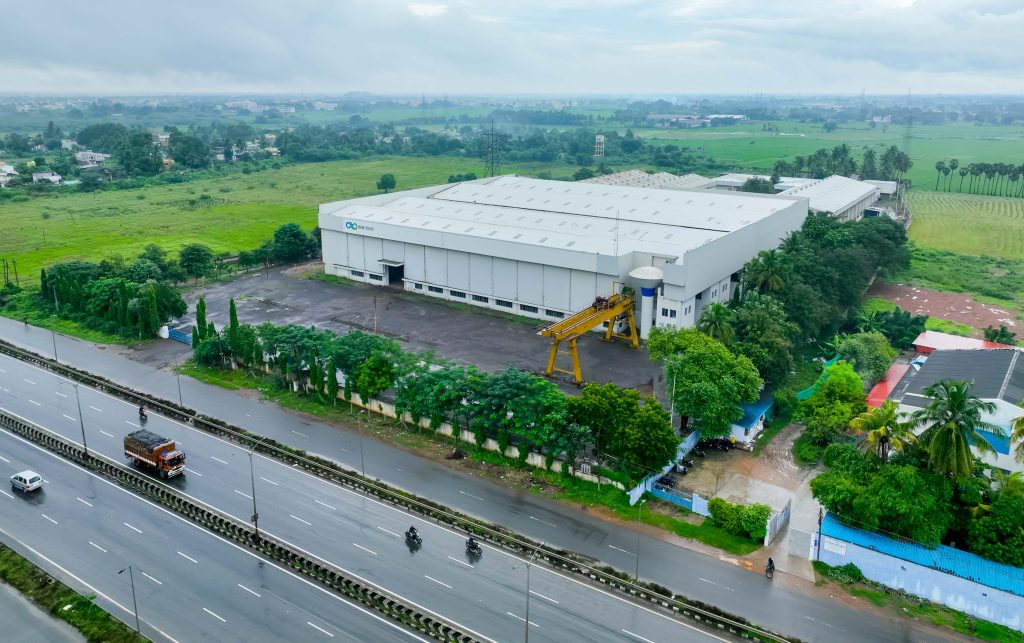As the global energy narrative pivots toward cleaner alternatives, hydrogen—especially green hydrogen—is emerging as the keystone of a decarbonized future. But transitioning from concept to commercial viability in the Indian context requires more than global tech—it demands strategic localization, engineering resilience, and supply chain innovation. At the forefront of this transformation is BGR Tech, a company bridging the world’s most advanced hydrogen innovations with India’s challenging, yet opportunity-rich landscape. With pilot systems already operational and a full-scale manufacturing ecosystem on the horizon, BGR Tech is laying the groundwork for India’s hydrogen backbone—from electrolysis to purification, storage to integration.
In an exclusive interaction, Parthiban Selvaraj, Head of Business Development at BGR Tech, shares deep insights into their localization journey, purification breakthroughs, and how their global alliances with firms like Elchemtech, Stargate, and ChemieTech are reshaping India’s hydrogen infrastructure.
Shweta Kumari, Sub-Editor at The Battery Magazine, had the opportunity to engage in a forward-looking conversation that uncovers how BGR Tech is gearing up to not just participate in—but actively drive—India’s green hydrogen revolution.
Let’s dive into the conversation and explore what lies ahead for India’s hydrogen economy.
BGR Tech emphasizes adapting global green hydrogen tech to Indian conditions. What were the biggest engineering challenges you faced during localization, and how did you overcome them?
At BGR Tech, our goal has always been to bridge advanced global hydrogen technologies with Indian field realities. Localization presented multiple challenges—chief among them were extreme ambient conditions, inconsistent water quality, and cost-sensitive deployment environments. For instance, adapting European-designed electrolyzers to cope with high ambient temperatures (45°C+) and dusty environments required significant modifications in thermal management and filtration systems.
Our engineering team customized the Balance of Plant (BOP) to improve modularity and reduce parasitic losses. Additionally, we developed an ultra-pure water generation system compatible with India’s variable grid quality and water sources. Localizing components through Indian vendors helped us bring down costs while building a robust domestic supply chain.
Your 100 kW purification system achieves 99.999% (fuel cell grade) purity and operates up to 30 bar. Can you walk us through the core innovations that enabled such high purity and pressure handling?
The cornerstone of our purification unit is the integration of high-efficiency TSA (Temperature Swing Adsorption) and catalytic deoxygenation, followed by drying and compression systems—all fine-tuned to deliver fuel cell-grade hydrogen. Achieving 99.999% purity at 30 bar required innovation on both the control logic and hardware side.
We’ve designed proprietary logic for dynamic adjustment based on inlet impurity profile and temperature fluctuations, ensuring continuous output quality. Furthermore, we selected advanced adsorbents and corrosion-resistant alloys for high-pressure operation and used leak-proof sealing tech to maintain system integrity over extended duty cycles.

You’re integrating both PEM (via Elchemtech) and high-pressure alkaline electrolysers (via Stargate’s 32 bar Stellar series). How do you determine which technology suits a given project, and what are the trade-offs?
The choice between PEM and high-pressure alkaline is driven by project-specific parameters. PEM is compact, ideal for dynamic load-following applications like mobility and renewables integration. It’s well-suited when space, ramp rates, and purity are critical.
On the other hand, Stargate’s high-pressure alkaline systems offer a more cost-effective solution for industrial-scale hydrogen production, especially where land and footprint aren’t constraints. These systems can directly output at 30 bar, reducing downstream compression costs. The trade-offs lie in OPEX, CAPEX, and integration complexity.
We conduct detailed techno-economic analysis before recommending a solution, considering factors like grid variability, water purity, duty cycles, and customer application.
You’re aiming to manufacture full-value-chain hydrogen equipment (‘Make in India’). What are your timelines and plans for scaling from pilot to manufacturing?
At BGR Tech, we have completed end-to-end design and engineering for green hydrogen systems ranging from 100 kW up to 2.5 GW, positioning us to address the full spectrum of project requirements—from industrial-scale pilots to national-scale deployments.
Building on the success of our 100 kW demonstrator, we are now supporting multiple large-scale hydrogen projects across India and the Middle East. These include MW-level deployments where we are supplying integrated BoP systems, purification units, and advanced control architectures tailored to local site conditions.
To enable this scale, we have secured land and finalized plans for a dedicated hydrogen equipment manufacturing facility. The facility will produce critical systems—including electrolysers (in partnership), high-purity gas purification skids, compression and storage units, and modular water treatment systems—under the ‘Make in India’ framework.
We’ve partnered with ChemieTech as our EPC lead to ensure fast-track execution and global standards in infrastructure, integration, and delivery. This manufacturing base will not only serve India’s green hydrogen demand but also support strategic exports to key markets in Asia and the MENA region.
Which sectors—mobility (e-trucks/FCVs), industrial feedstock (steel, fertilizer), energy storage—do you see as the most promising immediate market for your green hydrogen solutions?
In the near term, industrial feedstock—particularly refineries, fertilizers, and steel plants—offers the highest adoption potential due to their large, centralized hydrogen demand. Many are already under regulatory pressure to decarbonize.
However, we also see growing interest in mobility applications like hydrogen e-trucks and buses, especially with state-led green corridors and fuel cell trials. We’re actively working with logistics operators and metro transport bodies for deployment pilots.
How do you envision integrating hydrogen with battery storage systems? Do you see hybrid solutions for smoothing renewables, frequency regulation, or remote microgrids?
Absolutely. Hydrogen and battery technologies are inherently complementary rather than competitive. We foresee the rise of hybrid energy storage systems that leverage the rapid response capabilities of batteries alongside the long-duration storage potential of hydrogen.
In remote microgrids—such as those in Ladakh or island regions—these hybrid systems can deliver true energy autonomy. We’re currently piloting setups where solar power combined with battery storage addresses immediate demand, while an electrolyser and fuel cell system provides seasonal energy storage and enhances grid stability. Such configurations are also highly effective for frequency regulation, peak shaving, and integrating variable renewable energy into the grid.
India’s National Green Hydrogen Mission and PLI incentives are reshaping the market. How have these policies impacted your project pacing, investment outlook, and cost competitiveness?
The National Green Hydrogen Mission has catalyzed both investor interest and end-user confidence. The PLI scheme for electrolyser manufacturing makes scaling local production viable, especially for import substitution.
These incentives have accelerated our pilot deployments and derisked our capex planning for the upcoming manufacturing hub. Moreover, viability gap funding and state incentives are enabling offtake agreements with industrial users, helping us offer green hydrogen at competitive prices even at low volumes.
Looking ahead to 2030, is BGR Tech exploring adjacent technologies like green ammonia, methanol, or biogas, as hinted by government advisors? What are your R&D priorities in energy storage and green ‘Power-to-X’ solutions?
Yes, our roadmap includes green ammonia and e-methanol synthesis for energy export and maritime fuel applications. We are currently studying catalyst options and integration strategies with our hydrogen systems.
We’re also working on reversible solid oxide cells (r-SOCs) for co-generation of power and hydrogen, and thermochemical storage systems for CSP plants. The ultimate goal is to provide end-to-end Power-to-X platforms that combine green hydrogen with carbon capture, bio-CNG, or even synthetic aviation fuels (SAFs).
Our R&D team is collaborating with academia and national labs to explore cost-efficient storage, CO₂ utilization, and system-level optimization models.



